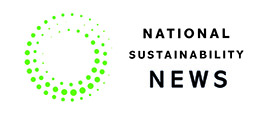Hopes that melting polar regions could be helped by advanced geoengineering solutions such as stratospheric aerosol injections, may be fanciful, and indeed could do harm to net-zero, ecosystems and communities.
This is according to a new assessment, published in Frontiers in Science, which looked at five of the most developed geoengineering proposals currently being considered for use in Antarctica and the Arctic.
“These ideas are often well-intentioned, but they’re flawed. As a community, climate scientists and engineers are doing all we can to reduce the harms of the climate crisis but deploying any of these five polar projects is likely to work against the polar regions and planet,” said lead author Professor Martin Siegert, from the University of Exeter.
To conduct the new assessment, the researchers looked at five geoengineering proposals that have received the most attention to date:
stratospheric aerosol injections (SAI): releasing sunlight-reflecting particles into the atmosphere to reduce the sun’s warming effect.
Sea curtains/walls: flexible, buoyant structures anchored to the seabed to prevent warm water from reaching and melting ice shelves.
Sea ice management: pumping seawater onto sea ice to artificially thicken it or scattering glass microbeads onto sea ice to boost its reflectivity.
Basal water removal: pumping subglacial water away from underneath glaciers to slow ice sheet flow and reduce ice loss.
Ocean fertilisation: adding nutrients such as iron to polar oceans to stimulate blooms of phytoplankton that draw carbon into the deep ocean when they die.
According to the review none of the ideas were found to currently benefit from robust real-world testing. No field experiments were found to exist for sea curtains or sea ice reflection; SAI had only been tested with computer modelling, ocean fertilisation experiments were inconclusive, and glacier water removal had not been demonstrated beyond limited drilling.
Yet each of the five ideas were found to risk intrinsic environmental damage, with sea ice management carrying particular ecological risks, such as glass beads darkening the ice, and water pumps requiring vast infrastructure. The authors also found that the risks of SAI include ozone depletion and global climate pattern change; sea curtains risk disrupting habitats, feeding grounds and the migration routes of marine animals including whales, seals and seabirds; glacier water removal risks contaminating subglacial environments with fuels; and ocean fertilisation carries uncertainty as to which organisms will flourish or decline, as well as the potential for triggering shifts in natural ocean chemical cycling.
Although the authors acknowledge the importance of explorative research, they say that continuing to pursue these five polar geoengineering proposals could shift focus and urgency from the deep systemic change needed to cut greenhouse gas emissions. Geoengineering, they argue, therefore risks splitting monetary and research resources when time is of the essence.
© 2019 Perspective Publishing Privacy & Cookies



Recent Stories